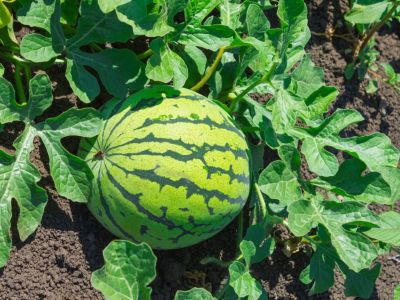What Causes Gummy Stem Blight?
Watermelon gummy stem blight is caused by the fungus Didymella bryoniae. The disease is both seed and soil-borne. It can be present in or on infested seed, or overwinter for a year and a half on infected crop residue. Periods of high temperature, moisture and humidity foster the disease – 75 F. (24 C.), relative humidity over 85% and leaf wetness from 1-10 hours. Wounds on the plant either caused by mechanical equipment or insect feeding along with powdery mildew infection predispose the plant to infection.
Symptoms of Watermelons with Gummy Stem Blight
The first symptoms of gummy stem blight of watermelons appear as round black, wrinkled lesions on young leaves and dark sunken areas on the stems. As the disease progresses, gummy stem blight symptoms increase. Irregular brown to black blotches appear between leaf veins, gradually expanding and resulting in the death of the affected foliage. Older stems at the crown near a leaf petiole or tendril split and ooze. Gummy stem blight does not directly affect the melons, but can indirectly affect the size and quality of the fruit. If the infection is spread to the fruit as black rot, the infection may be evident in the garden or develop later on during storage.
Treatment for Watermelons with Gummy Stem Blight
As mentioned, gummy stem blight develops from contaminated seed or infected transplants, so vigilance regarding infection is necessary and use of disease free seed. If any sign of the disease appears to be present on seedlings, discard them and any sown nearby that may have been infected. Remove or till under any crop refuse as soon after harvest as possible. Grow powdery mildew resistant crops if possible. Fungicides for controlling other fungal diseases may protect from infection, although a high resistance factor to benomyl and thiophanate-methyl has occurred in some areas.
